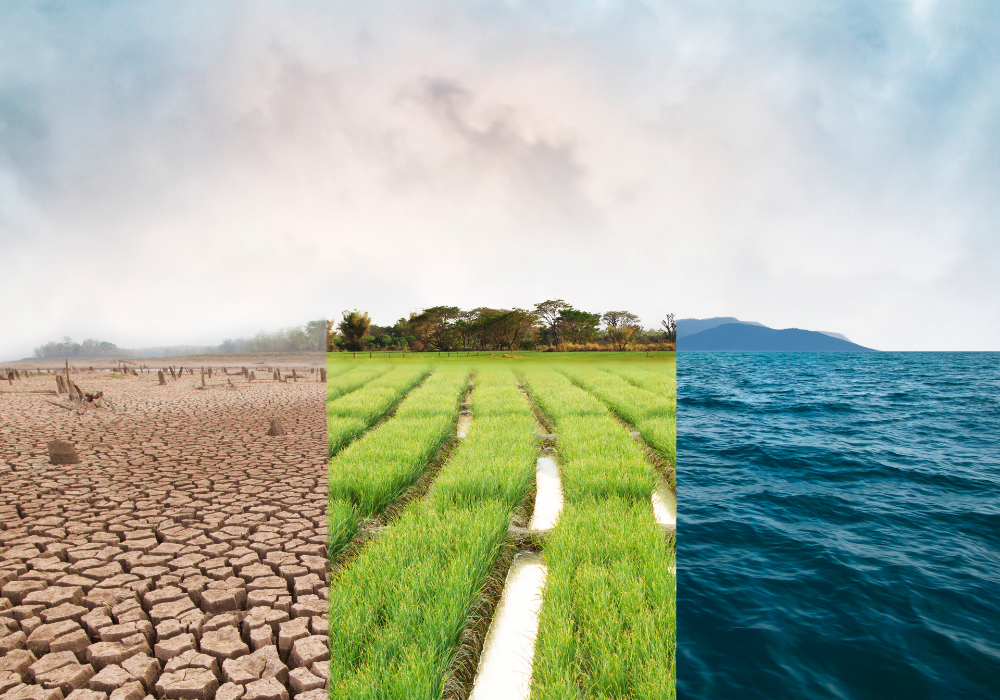Blog | 08 Feb 2024
Understanding business sustainability in the context of environmental thresholds

Ilana Gottlieb
Economist, Economic Impact

When business leaders think of the “thresholds” that hold meaningful consequences for their organisations, ones affecting corporate tax or regulatory requirements might be the examples that first come to mind. However, another kind of threshold deserves businesses’ more immediate attention – the environmental thresholds at which abrupt and potentially irreversible changes to the Earth and its systems occurs.
Understanding these environmental thresholds provides essential context for corporate sustainability efforts, and more broadly, reinforces the importance of global action on sustainability issues.

Non-linear environmental risks, and the point of no return
Every year the publication of the World Economic Forum’s (WEF) annual Global Risks Report makes for an interesting, if alarming, read. The report assesses the global risks landscape based on insights from leaders in academia, business, government, and civil society.
The 2024 report introduced a new entrant to its global risks list—critical change to Earth systems—defined as “long-term, potentially irreversible, and self-perpetuating changes to critical planetary systems, as a result of breaching a critical threshold or ‘tipping point’, at a regional or global level, that have abrupt and severe impacts on planet health or human welfare”. “Critical change to Earth systems” was ranked as the second most severe risk over the next decade, after the risk of extreme weather events.
The WEF report states that the threshold for triggering critical change to Earth systems is likely to be passed at or before 1.5°C of global warming, which is currently anticipated to be reached by the early 2030s. The projected impacts of approaching or crossing Earth system thresholds hold significant implications for businesses’ bottom line.
Consider a critical threshold addressed in the WEF report—the risk of the Amazon Rainforest tipping into a savannah-like state. This could reduce the level of atmospheric moisture recycling, which in turn increases the risks of forest fires—jeopardising global value chains with connections to the region. For example, forest fires can affect infrastructure for sourcing minerals like copper from or adjacent to the Amazon basin, which consequently can impact the production of electronic products such as semiconductors, affecting technology companies and their investors globally.
The collapse of the Greenland and West Antarctic Ice Sheets is another threshold highlighted by the WEF. Crossing this threshold could trigger rapid sea level rise and potentially expose half a billion people to annual coastal flooding events by 2100. In turn, coastal flooding can damage built infrastructure, threaten marine ecosystem services, and—among other impacts—increase the salinity of freshwater, reducing water supply for agriculture and threatening associated value chains.
The WEF explains that the impacts of crossing Earth system thresholds will be felt on a systemic level, as environmental impacts like biodiversity loss and ecosystem collapse will in turn result in further socioeconomic implications, such as involuntary migration and chronic health conditions. These compounding risks will reverberate across the real economy and financial systems.

Contextualising Earth system thresholds to enhance business resilience
While government, academia, and civil society groups all ranked the risk of “critical change to Earth systems” as one of the top 10 most severe risks faced over the next two years, the risk did not feature as a short-term priority for the private sector. This raises the question of whether businesses are underestimating the severity of these risks in their decision-making.
One reason for this disconnect is the lack of quantification of sustainability-related impacts and risks along a business’s value chain. Most models used by businesses assume that environmental resources can be substituted in the face of business disruptions. However, a significant environmental disruption may mean no alternative substitutes are available in the short to medium term. Moreover, if Earth system thresholds are triggered, such as the Amazon shifting to a savannah-like state, environmental impacts may be irreversible and permanent—requiring a complete rethink of current operating models across the broader economy.
While significant academic research efforts have been made to scientifically quantify these thresholds of the Earth systems, economic models are needed to provide a more accurate picture of the impact and risk landscape for businesses, and how they can better act within this changing context.
Doing so will require mapping and forecasting sustainability-related impacts and risks not just as a box-ticking exercise, but rather as a means to enhance business resilience and the sustainability of the economy as a whole.
Our world faces a myriad of global risks in the next few years. Businesses that will fare best are those that understand how their activities interact with Earth systems and use this opportunity to champion innovative and sustainable business operating models.
Author

Ilana Gottlieb
Economist, Economic Impact

Private: Ilana Gottlieb
Economist, Economic Impact
London, United Kingdom
Talk to us
The Sustainability Management Advisory Platform (S-MAP) platform utilises Oxford Economics’ expertise, advanced economic models, and innovative tools to tackle sustainability challenges for our clients. This platform applies economics to analyse and guide sustainability strategies, aiding clients in achieving their goals.
For a demo and to discuss how S-MAP can help you, please complete the form.
Tags:
You may be interested in

Global Trade Education: The role of private philanthropy
Global trade can amplify economic development and poverty alleviation. Capable leaders are required to put in place enabling conditions for trade, but currently these skills are underprovided in developing countries. For philanthropists, investing in trade leadership talent through graduate-level scholarships is an opportunity to make meaningful contributions that can multiply and sustain global economic development.
Find Out More
Australian office sustainability outcomes underpin asset performance
The focus on green office buildings and sustainability is being driven by both government targets to achieve net zero and increasing corporate and investor focus on environmental, social, and corporate governance (ESG) considerations and compliance.
Find Out More
Greenomics – Ep. 9 | The nature of Travel & Tourism
A discussion of the crucial role of climate-ready buildings in the global push towards a net-zero future. They delve into sustainable construction practices, the importance of regulations, retrofitting existing buildings, and behavioural changes to create environmentally friendly homes. The conversation also touches on the economic challenges and choices associated with transitioning to sustainable living.
Find Out More
SEC climate disclosure rules will help investors understand their climate risks
SEC climate disclosure rules require firms to disclose scope 1 and 2 emissions. How will these new SEC climate rules help investors make decisions?
Find Out More